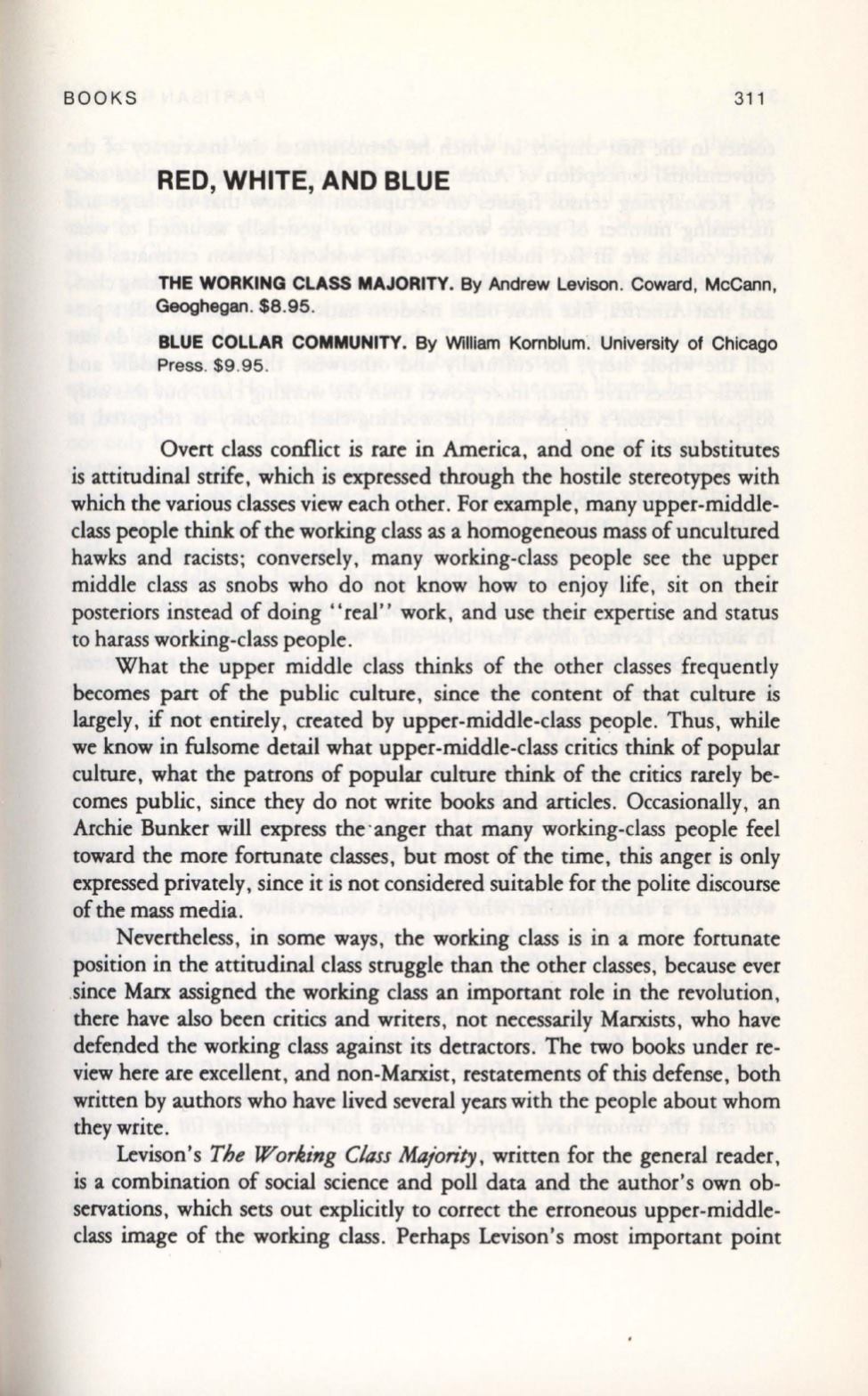
BOOKS
311
RED, WHITE, AND BLUE
THE WORKING CLASS MAJORITY.
By
Andrew Levison. Coward, McCann,
Geoghegan. $8.95.
BLUE COLLAR COMMUNITY.
By
William Kornblum'.
University of Chicago
Press. $9.95.
Overt class conflict is rare in America, and one of its substitutes
is attitudinal strife, which is expressed through the hostile stereotypes with
which the various classes view each other. For example, many upper-middle–
class people think of the working class as a homogeneous mass of uncultured
hawks and racists; conversely, many working-class people see the upper
middle class as snobs who do not know how to enjoy life, sit on their
posteriors instead of doing " real" work, and
use
their expertise and status
to harass working-class people.
What the upper middle class thinks of the other classes frequently
becomes part of the public culture, since the content of that culture is
largely, if not entirely, created by upper-middle-class people. Thus, while
we know in fulsome detail what upper-middle-class critics think of popular
culture, what the patrons of popular culture think of the critics rarely be–
comes public, since they do not write books and articles. Occasionally, an
Archie Bunker will express the'anger that many working-class people feel
toward the more fortunate classes, but most of the time , this anger is only
expressed privately, since it is not considered suitable for the polite discourse
of the mass media.
Nevertheless, in some ways, the working class is in a more fortunate
position in the attitudinal class struggle than the other classes, because ever
.since Marx assigned the working class an important role in the revolution,
there have also been critics and writers, not necessarily Marxists, who have
defended the working class against its detractors. The two books under re–
view here are excellent, and non-Marxist, restatements of this defense, both
written by authors who have lived several years with the people about whom
they write.
Levison's
The Working Class Majon'ty,
written for the general reader,
is
a combination of social science and poll data and the author's own ob–
servations, which
sets
out explicitly to correct the erroneous upper-middle–
class image of the working class. Perhaps Levison's most important point


